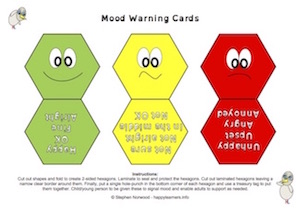Introduction
Very young children will often break things because of curiosity. At that age they are still learning to understand the basic properties of things around them and they don't always appreciate either the permanency of their action or the social rules of wrong-doing.
As children mature they begin to recognise that breaking things tends to bring a lot of attention, though increasingly in a negative form. As their theory of mind develops they will understand that breaking things upsets people and is a powerful way of telling others that 'I'm really angry!' From this point breaking things can be used as a 'weapon' to create emotional hurt; a 'shield' with the message 'stay away from me' or as a 'flag' signalling the message 'I'm all powerful so pay attention to me!'
Breaking things is thus associated with a child or indeed an adult's expression of anger. Therefore the management of breaking things is the management of the expression of anger. It is important to make the destinction between being angry and any behaviour that results from that anger. It is difficult to control when we get angry but we can learn to control how we express it.
Experiencing Loss
Remove a possession of your child for a period of time. Though this is a punitive action your intention here is not punishment but to make them experience the feeling of loss that happens when something is broken. Avoid things they need to emotionally regulate like a specific cuddly toy. The amount of time needs to be long enough for them to miss use of the thing removed. Earning it back is an opportunity to discuss the incident where they broke something and link their loss to that of others. Explore with your child how it felt to be without their possession. Then explore with them how they think the person who had their possessions broken felt. Sometimes use pencil and paper to create very simple drawings can support this reflection time.
Calming Strategies
Teach your child calming techniques. Use these in conjunction with the rating scales to try avoid your child getting totally angry and having a meltdown. Teaching your child to emotionally regulate takes time and effort to achieve. You need stubborn perseverance in the face of the inevitable setbacks particularly at first. However, learning to use self-calming strategies has huge long term benefits.
Understanding the cause
Explore the feelings of anger and jealousy with your child. Reassure them that having these feelings is OK. However, it is what they do when angry or jealous that is not OK. It can often be better to develop their understanding through neutral contexts such as children's stories and TV programmes.
Social Story
Use a social story about breaking things to ensure that your child fully understands how breaking things is unacceptable; how it makes others feel and that there will be consequences.





